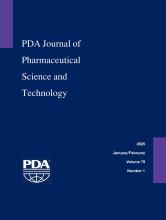Abstract
The risk for virus contamination in biotechnology products (e.g., monoclonal antibodies, fusion proteins, or antibody-drug conjugates) derived from mammalian cell lines is a safety concern that must be evaluated from the early stages of development. The regulatory requirement for virus clearance that assesses the capacity of purification processes to remove endogenous and adventitious viruses is aimed at mitigating viral safety risk. A virus clearance database, containing virus clearance study data from biological license application and investigational new drug submissions, has been maintained by the Food and Drug Administration's Center for Drug Evaluation and Research for over fifteen years. Herein, an update is provided with regard to impacts of process changes on the virus clearance during the product development cycle of biotechnology drug products based on the investigational new drug submissions received between January 1986 through March 2024. The current data demonstrated continuous robust removal of retroviruses and parvoviruses by chemical inactivation and virus-retentive filtration unit operations, respectively. Additional virus removal was supported by inclusion of one or more chromatography processes unit operations. For these processes, interactive process parameter effects were investigated for impacts on the reported virus clearance. The data reported here demonstrated that process- and product- specific considerations needed to be evaluated on a case-by-case basis to achieve robust and effective virus clearance for mammalian-cell-derived biotechnology products.
- Viral Safety
- Virus Clearance
- Low pH inactivation
- Virus-Retentive Filtration
- Chromatography Viral Clearance
- Pharmaceutical Viral Clearance
- Retrovirus-Like Particle Clearance
- Safety Factor
- Received January 6, 2025.
- Accepted March 17, 2025.
- Copyright © 2025, Parenteral Drug Association
PDA members receive access to all articles published in the current year and previous volume year. Institutional subscribers received access to all content. Log in below to receive access to this article if you are either of these.
If you are neither or you are a PDA member trying to access an article outside of your membership license, then you must purchase access to this article (below). If you do not have a username or password for JPST, you will be required to create an account prior to purchasing.
Full issue PDFs are for PDA members only.
Note to pda.org users
The PDA and PDA bookstore websites (www.pda.org and www.pda.org/bookstore) are separate websites from the PDA JPST website. When you first join PDA, your initial UserID and Password are sent to HighWirePress to create your PDA JPST account. Subsequent UserrID and Password changes required at the PDA websites will not pass on to PDA JPST and vice versa. If you forget your PDA JPST UserID and/or Password, you can request help to retrieve UserID and reset Password below.






